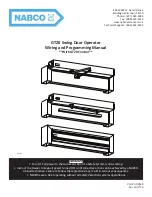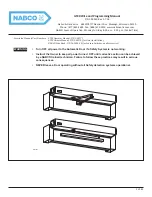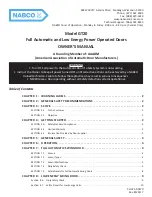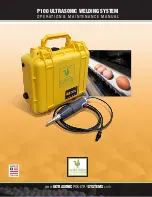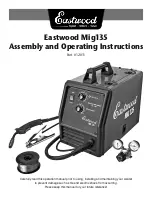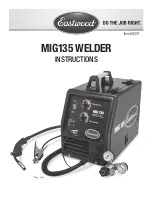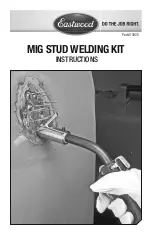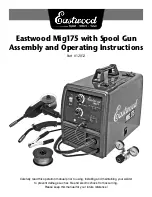
8
3.3 ROOF INSTALLATION
- If the outdoor unit is installed on a roof, be sure to level the
unit. Make sure that the roof structure is appropriate for
mounting the unit.
- Consult your local codes regarding mounting on the roof.
- If the outdoor unit is installed on the roof or external walls, this
could cause excessive noise and vibration and be classified as
an unsuitable installation for service.
3.4 ELIMINATION OF AIR WITH THE VACUUM PUMP (Fig 9)
The air and humidity in the refrigeration system can cause
unwanted effects as indicated below:
- Increased pressure in the system.
- Increase in absorbed current.
- Decrease in the efficiency of the refrigerant.
- Freezing and obstruction of the capillary pipes.
- Corrosion of parts of the refrigeration system.
In order to avoid the above, the indoor assembly and the pipes,
placed between the indoor and outdoor assemblies, must be
tested for leaks and purged to remove non-condensing elements
and moisture from the system.
Check that each pipe (both the gas and liquid side pipes) between
the internal and external groups has been connected correctly
and that all the wiring required for testing has been carried out.
- Remove the valve cap on the outdoor assembly.
- Make sure that at this point both gas valves and liquid remain
closed.
- Check the length of the tube and relative quantity of the
refrigerant, for a correct charge, check the superheat value.
The values in the table are indicative.
When changing the location of the unit, bleed with the vacuum
pump.
Make sure that the refrigerant inside the air conditioner is
always in a liquid state.
Fig. 9
The outdoor unit is supplied with a charge of R410A refrigerant
gas suitable for ensuring proper operation up to a maximum
distance of 5 meters from the indoor unit.
If you decide to install the 2 units at a distance greater than
5 meters, make sure to add 20 g of refrigerant gas for each
additional meter of piping (Tab. 4).
For example, if there are 7 meters of piping between the outdoor
and indoor units, add 40 g of R410A gas.
In any case, never exceed 15 meters.
Add only after vacuuming the pipes connecting the 2 units,
as illustrated in chapter 3.4, after which you can proceed with
opening the gas taps, mounted on the machine.
3.5 EVACUATION
Connect the end of the charging hose to the vacuum pump to
evacuate the air from the pipes of the indoor unit.
Check that the “LO” knob of the pressure gauge valve is open.
Then run the vacuum pump.
The running time varies depending on the length of the pipes and
the capacity of the pump.
When the desired vacuum is reached, close the “LO” knob of the
pressure gauge valve and stop the vacuum pump.
Finally, using a service valve wrench, turn the gas side valve
stem counterclockwise to fully open.
Loosen the charging hose connected to the gas side service port
to relieve the pressure, then remove the hose.
Replace the gas valve and service plug cover nut and tighten
securely with an adjustable wrench.
This procedure is very important to avoid system leaks
Replace the service valve caps on both the gas and liquid side
and tighten well.
This completes the air purge procedure with the vacuum pump,
make sure that all pipes are connected correctly and that the
service valves on the gas and liquid sides are completely open.
3.6 PUMP DOWN
This procedure is carried out when the unit needs to be moved or
assistance is carried out on the refrigerant circuit.
Emptying allows all the refrigerant to be collected in the outdoor
unit without leaks.
3.7 RECOVERY PROCEDURE
- Connect a low pressure gauge with a hose to the gas valve
service socket.
- Half open the gas valve and empty the air from the pipeline
pressure gauge using refrigerant gas.
- Close the liquid valve completely.
- Turn on the machine in cooling mode.
- When the pressure of the manometer goes between 0 and
0.5 kg / cm 2G (between 14.2 and 7.1 P.S.G.I)
close the gas valve completely and quickly switch off the air
conditioner.
Complete recovery of the refrigerant from the outdoor unit was
thus carried out.
WARNING! Be sure to perform the flushing procedure with
the group in COLD MODE.


























